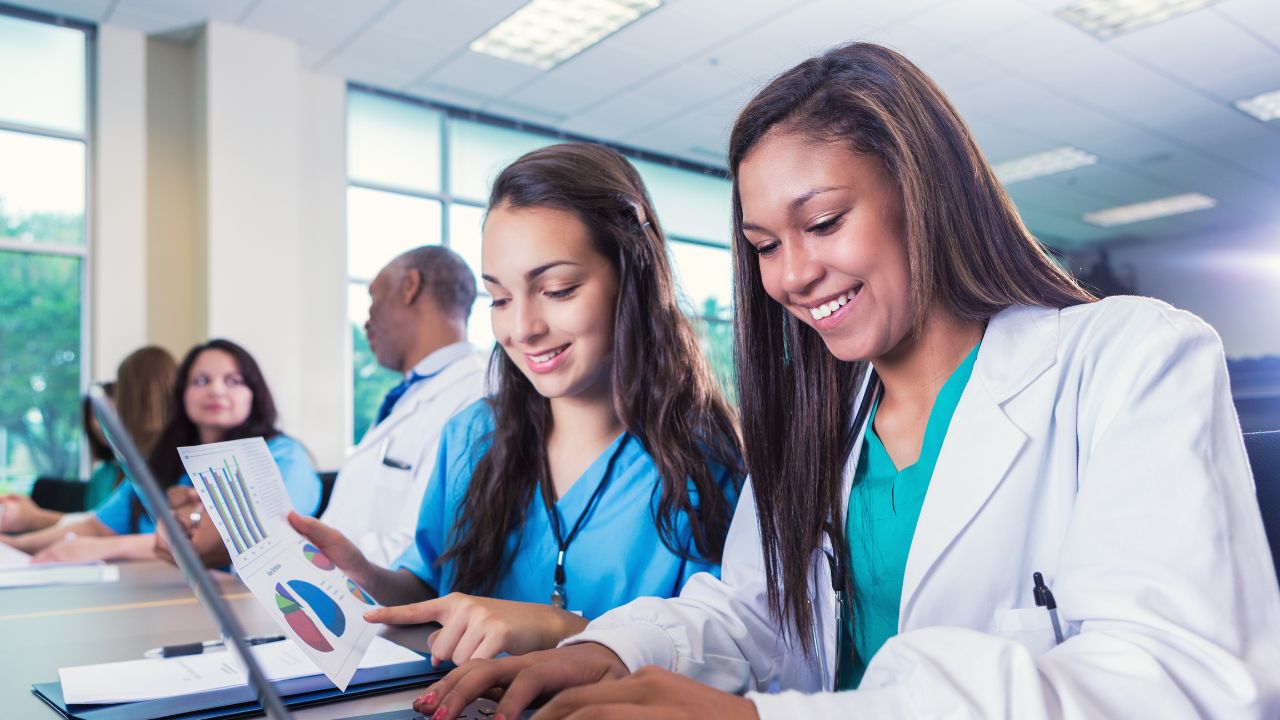- By Sakshi Gupta
- Fri, 29 Dec 2023 05:10 PM (IST)
- Source:JND
JE Education Desk: Technology has brought about immense changes to the medical education space. In online education, technology plays a big role in integrating students, teachers and schools. Besides virtual lectures and online exams, there are patient simulations, Augmented Reality (AR) and other training methods that prepare students to understand, and delve into, technology-dominated career options.
Over the past few years, technological advancements have changed the way knowledge, especially medical knowledge, is obtained, disseminated and applied. Integration of technology in medical education has opened up plenty of new possibilities for students, educators and healthcare professionals.
With medical technology undergoing revolutionary upgrades at a faster pace than ever before, all healthcare professionals must stay up-to-date with the most current innovations. As healthcare depends more and more on technology with each passing year, students in the classroom should be introduced to innovations early on.
Here, are some inputs by Mr.Abhishek Ghosh, Co-founder and director, of Medisage about how technology is impacting medical education and the future of healthcare.
Remote Learning
A major advantage of technology in medical education is remote and improved learning opportunities. Today, interactive digital platforms, along with textbooks and lectures, are allowing students to learn in a more personalized manner. High-tech solutions, including AR, Virtual Reality (VR) and 3-D, are fast improving healthcare education. Virtual anatomy classes allow students to know the human body in an online 3-D set-up, offering hands-on experience, which was earlier possible only through cadaver dissection.
Wearable technology is giving students, learners and patients a new perspective of the medical world with a first-person camera view. Wearable technologies placed on patients help instructors see how medical students respond to and interact with them and allow students to learn from their mistakes in real and simulated settings unlike ever before.
Also Read:- New Year 2024: 9 Amazing Resolution Ideas For College Students
Convenient Learning
New online platforms are making medical education become more accessible and convenient than ever before. Students are now able to access online with a few simple clicks of the ‘mouse’ a wide variety of resources—including textbooks, lectures and research articles. The many new e-learning platforms are providing flexibility in learning helping students to study at their convenience and speed and breaking down geographical barriers and time constraints.
Simulation-Based Training
In medical education, technology plays a vital role in simulation-based training programmes, using high-end mannequins and VR systems, allowing students and healthcare professionals to practise emergency cases in a controlled environment. These simulations help students gain the necessary clinical skills and decision-making abilities and develop teamwork, fostering confidence even before they handle real-life patients.
Collaborative Learning
Technology has made medical education a collaborative and interactive experience rather than a solitary pursuit. Discussion forums, online communities and social media platforms enable students, educators and professionals from across the world to connect, exchange ideas and collaborate on research and projects. This interconnectedness fosters a global medical community that promotes the sharing of knowledge, experiences and best practices.
State-of-the-Art Innovation
Technology is helping medical education go beyond classrooms and more into research and innovation. Advancements in technology help with the collection and analysis of large datasets, leading to breakthroughs in such areas as genomics, personalized medicine and artificial intelligence (AI). Medical students and researchers have access to powerful tools and resources that allow them to discover new frontiers, and contribute to scientific advancements boosting healthcare innovations.
Platforms Close to Home
There are popular medical education platforms in India that facilitate peer-to-peer connectivity, allowing healthcare practitioners to connect, collaborate and learn from each other. Through forums, discussion boards and collaborative projects, professionals can share real-life cases, insights and best practices. This not only enriches the learning experience but also builds a supportive global community of practitioners dedicated to advancing healthcare knowledge collectively.
Healthcare practitioners can upload, and discuss, actual cases they have encountered in their practice, fostering a dynamic learning environment. This approach bridges the gap between theoretical knowledge and practical application, providing invaluable insights into the complexities of healthcare scenarios. The power of shared experiences accelerates the learning curve, ensuring that professionals are well-equipped to navigate the challenges of their respective fields.

